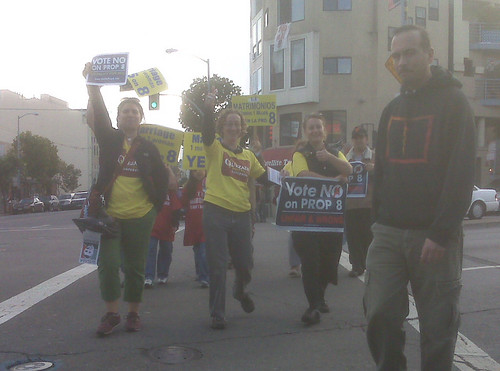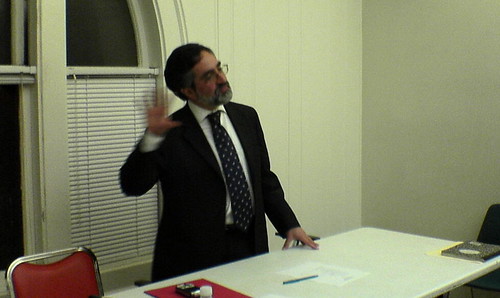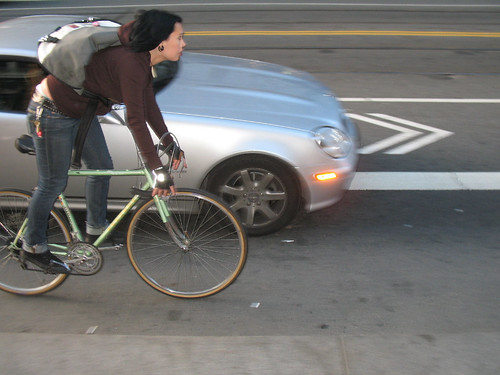 The Chronicle missed it, cause it wasn’t a guy lost in the woods (although, in a major advance for the media, they cranked up their tizzy for a person of color, not just for a white woman), but the LA Times yesterday covered a Union of Concerned Scientists report on the dangers posed by construction equipment in California.
The Chronicle missed it, cause it wasn’t a guy lost in the woods (although, in a major advance for the media, they cranked up their tizzy for a person of color, not just for a white woman), but the LA Times yesterday covered a Union of Concerned Scientists report on the dangers posed by construction equipment in California.
The effects of air pollution from construction equipment in California are “staggering,” according to a report by the Union of Concerned Scientists.
The environmental group concluded that at least 1,100 premature deaths and half a million work and school absences in 2005 were caused by people breathing emissions from older tractors, bulldozers and other diesel equipment – at an estimated public health cost of $9.1 billion.
“This is the first time the health and economic impacts of construction-related air pollution in California have ever been analyzed,” said Don Anair, author of the report by the Union of Concerned Scientists. The report urged state regulators to quickly require owners to retrofit or replace older equipment.
“Construction equipment being used to build our hospitals shouldn’t fill them up…. This is a bill being footed by everyone in California, and particulate pollution is a silent killer,” Anair said, citing asthma attacks, cancer and heart disease.
That’s 1100 deaths in California every year.
crossposted from Left in SF
The problem seems to be that until 1996, there were no standards for emissions by construction equipment, and when they went into effect that year, the standards only covered new equipment. So there’re 250,000 old, dirty machines at work in the state, some of which create as much pollution in an hour as a semi truck would in 1100 miles of driving. So before lunch, these machines have cranked out more pollution than a truck driving all the way across the US.
The machines crank out nitrogen oxides, which are the main component of smog, which is bad enough. Even worse, though, is that they emit a huge amount of particulate matter (PM), better known as soot. The PM, which consists of tiny particles, gets stuck in your lungs, and in the words of one reviewer of the study, is “like tiny razorblades”. It caused 30,000 asthma attacks in 2005, and caused over 300,000 school absences. In many parts of the state, kids are more likely to carry asthma inhalers than pencils to school.
What about San Francisco? Well, as you might be able to tell from the image, we are in a highest-risk area. Of course, the distribution of the PM and the smog isn’t even, so most likely the places where construction is going on most heavily get hit. So the Mission, South of Market, and other construction hot spots are probably the highest risk.
The major question at hand is what to do about this. Are we doomed to suck tiny razor blades into our lungs until there is no pre-1996 construction equipment left? Politically, it’s a pretty tough battle, but we’d need to push the construction industry (who has quite a bit of clout) to retrofit their equiment, use alternative fuels (like biodiesel), replace the engine on the vehicle, or even the whole thing, and at very least, reduce idling.
It’s not clear to me how we solve this, but it seems horrific that we’re killing over 1100 people a year for construction in California alone. At the very least we ought to be able to push the state to use cleaner equipment. I do think that the scale of construction equipment fuel use should make it possible for someone to start a biodiesel business that sells to construction companies. This came out of left field for me, so I haven’t come up with a solution that seems workable. It’s pretty clear that a thousand people and $9 billion a year constitutes a problem we need to solve fast.
The Air Quality Districts (or at least the Bay Area Air Quality Management District) have funds set up to help construction companies clean up their acts. The funds are pretty insufficient, though. The BAAQMD fund will only fund the cleanup of 1000 machines a year, which is only 4% of the (estimated) 25,000 machines operating in the bay Area.




 We got bad news this week. Looks like Mike Hennessy’s running for Sheriff again.
We got bad news this week. Looks like Mike Hennessy’s running for Sheriff again. 

 The Chronicle missed it, cause it wasn’t a guy lost in the woods (although, in a major advance for the media, they cranked up their tizzy for a person of color, not just for
The Chronicle missed it, cause it wasn’t a guy lost in the woods (although, in a major advance for the media, they cranked up their tizzy for a person of color, not just for